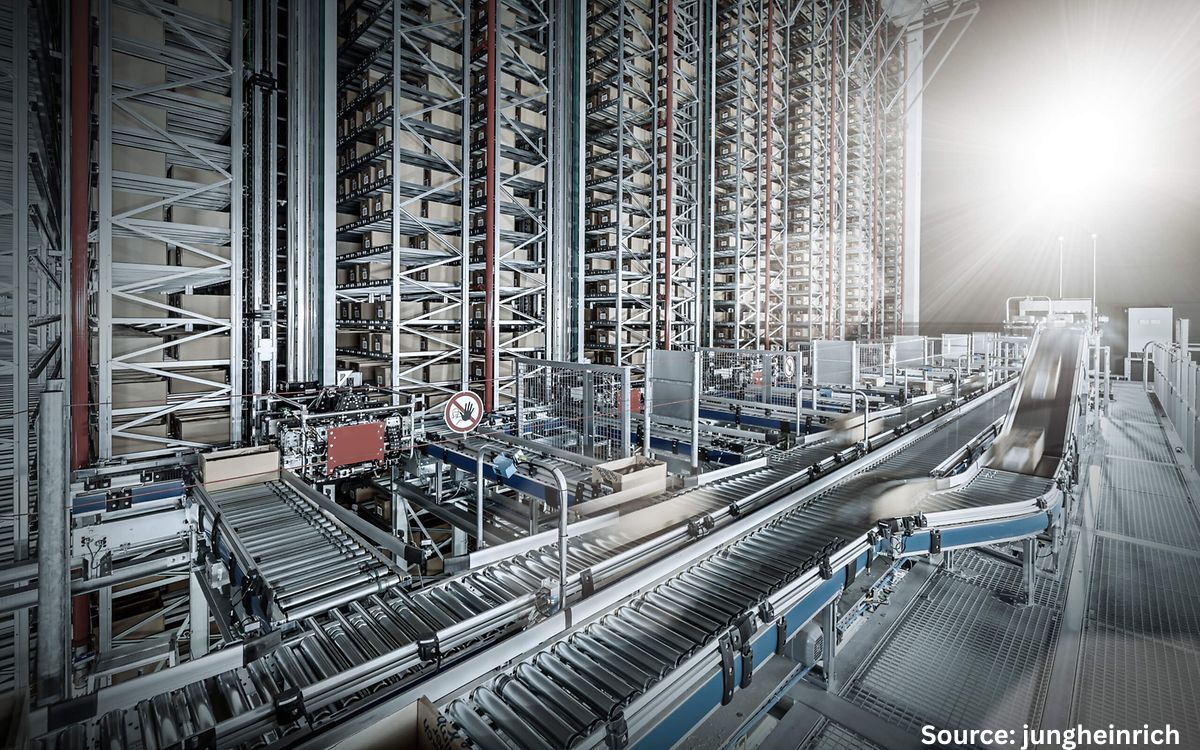
North America Heat Exchangers Market by Type (Shell & Tube, Plate & Frame, Air Cooled, and Others), by Material (Metals, Alloys, and Brazing-CLAD), and End User (Chemical, Energy & Power, Heating, Ventilation, Air Conditioning, and Refrigeration (HVACR), Food & Beverage, Pulp & Paper, and Others)– Opportunity Analysis and Industry Forecast, 2024–2030
Industry: Construction & Manufacturing | Publish Date: 20-Mar-2025 | No of Pages: 204 | No. of Tables: 156 | No. of Figures: 81 | Format: PDF | Report Code : CM1522
US Tariff Impact on North America Heat Exchangers Market
Trump Tariffs Are Reshaping Global Business
Market Overview
The North America Heat Exchangers Market size was valued at USD 5803.4 million in 2023, and is predicted to reach USD 9187.0 million by 2030, with a CAGR of 6.2% from 2024 to 2030.
Heat exchangers, engineered to transfer heat between fluids without direct contact, are extensively utilized across industrial, commercial, and residential domains, including HVAC systems and refrigeration units, to effectively heat or cool fluids or air. They function by permitting heat to traverse through a barrier, such as a solid wall or an array of plates or tubes, and can fulfill various tasks such as heating water in a boiler or cooling air in an air conditioning system.
These devices are available in diverse designs tailored to specific requirements, spanning from basic radiator coils to intricate systems found in chemical processing plants and power generation facilities. They play indispensable roles across numerous industries and applications, regulating air temperatures in buildings, facilitating steam production in power plants, controlling temperatures during chemical reactions, and assisting in food processing, among other functions. Additionally, they serve as critical components in automotive cooling systems and have widespread applications in aerospace, marine, and wastewater treatment sectors, where they play a pivotal role in ensuring efficient thermal management and energy transfer.
Focus on Sustainable Practices Across North America Drive Market Growth
The emphasis on sustainable practices across North America is a driving force behind market growth. As concerns regarding environmental conservation and resource efficiency continue to escalate, there is a heightened focus on adopting sustainable solutions across various industries. Heat exchangers, known for their energy efficiency and ability to facilitate heat transfer without environmental harm, are becoming increasingly integral to sustainable practices.
With regulations mandating the reduction of carbon footprints and the promotion of eco-friendly technologies, the demand for heat exchangers is surging. These devices play a crucial role in enhancing energy efficiency, reducing greenhouse gas emissions, and promoting sustainable thermal management practices. Consequently, the growing emphasis on sustainability in North America is propelling the expansion of the heat exchangers market.
Increasing Demand for HVAC Systems Across North America Propels Market Growth
The rising demand for HVAC systems across North America is a significant driver of market growth. As urbanization and industrialization continue to expand, there is a corresponding increase in the construction of commercial and residential buildings, driving the need for HVAC systems for heating, ventilation, and air conditioning. Heat exchangers are essential components of HVAC systems, facilitating efficient heat transfer and contributing to energy savings.
With growing awareness of energy efficiency and indoor air quality, there is a surge in demand for HVAC systems equipped with high-performance heat exchangers. This increasing demand for HVAC systems propels the growth of the heat exchangers market in North America as manufacturers cater to the needs of the construction and building sectors.
Competition from Alternative Technologies Restrains Market Growth
The presence of competition from alternative technologies acts as a restraint on market growth. As industries seek more efficient and cost-effective solutions for heat transfer and thermal management, alternative technologies emerge as viable options. These alternatives may offer advantages such as lower initial costs, simpler maintenance requirements, or better performance in specific applications, posing a competitive threat to traditional heat exchangers.
Consequently, heat exchanger manufacturers face challenges in maintaining market share and revenue growth amidst competition from alternative technologies. To mitigate this restraint, continuous innovation and adaptation to evolving market demands are necessary to sustain growth in the heat exchangers market.
Advancements in Cutting-Edge Materials and The Rising Trend of Industry 4.0 Create a Market Opportunity
Advancements in cutting-edge materials and the rising trend of Industry 4.0 are creating a significant market opportunity in North America. As technological innovations continue to progress, new materials offering improved thermal conductivity and corrosion resistance are being developed, enhancing the performance of heat exchangers.
Moreover, the integration of Industry 4.0 technologies, such as automation and real-time data analytics, is revolutionizing the manufacturing and operation of heat exchangers systems, leading to increased efficiency and productivity.
This convergence of advanced materials and Industry 4.0 presents an opportunity for companies in North America to develop and offer innovative heat exchangers solutions that meet the evolving needs of various industries, including manufacturing, energy, and construction. By capitalizing on these advancements, businesses can address the growing demand for high-performance heat exchangers and establish a competitive edge in the market.
The U.S. holds the dominant market share in the North American Market
The U.S.'s substantial investment in research and development initiatives aimed at advancing heat exchangers technologies is a driving force behind the market's growth in North America. These investments fuel innovation, leading to the development of cutting-edge heat exchangers solutions tailored to diverse industry needs. By staying at the forefront of technological advancements, U.S. companies gain a competitive edge, attracting customers seeking high-performance and efficient heat exchangers systems.
Moreover, these R&D efforts stimulate market expansion by creating opportunities for new applications across industries such as manufacturing, energy, HVAC, and automotive. Ultimately, the U.S.'s commitment to innovation in heat exchangers technologies strengthens its position as a global leader in the industry while driving growth in the North American market.
Mexico is Expected to Show Steady Growth in the North American Market
Industrial expansion in Mexico is anticipated to drive steady growth in the North American market due to several factors. Mexico has become an increasingly attractive destination for manufacturing operations, drawing investments from both domestic and international companies.
This industrial expansion across various sectors, including automotive, electronics, aerospace, and food processing, creates a heightened demand for thermal management solutions including heat exchangers. As industries continue to expand and modernize their operations, the need for efficient heat exchange technologies to regulate temperatures, facilitate production processes, and ensure equipment performance becomes paramount.
Additionally, Mexico's strategic location, skilled workforce, and favorable trade agreements, such as the United States-Mexico-Canada Agreement (USMCA), further bolster its position as a key player in the North American market. As a result, industrial expansion in Mexico is expected to drive sustained growth in the region's heat exchangers market, presenting significant opportunities for manufacturers and suppliers alike.
Competitive Landscape
Several market players operating in the North America heat exchangers market include ALFA LAVAL, API Heat Transfer, CALORPLAST USA, Danfoss Group, Enerquip Thermal Solutions, FUNKE Wärmeaustauscher Apparatebau GmbH, HRS Heat Exchangers, Mersen Group, Nexson, Pentair, Spirax Sarco Limited, SPX FLOW, SWEP International AB, T.RAD NORTH AMERICA, INC., Thermofin, Tranter, Wessels Company, Wieland, Xylem among others. These companies are adopting various strategies such as product launches to remain dominant in the heat exchangers market.
Key Market Segments
By Type
-
Shell & Tube
-
Fixed Tube Heat Exchangers
-
U-Tube Heat Exchangers
-
Floating Head Heat Exchangers
-
Other Shell & Tube Heat Exchangers
-
-
Plate & Frame Heat Exchangers
-
Gasketed Plate & Frame Heat Exchangers
-
Welded Plate & Frame Heat Exchangers
-
Brazed Plate & Frame Heat Exchangers
-
Other Plate & Frame Heat Exchangers
-
-
Air Cooled
-
Forced Draft Heat Exchangers
-
Induced Draft Heat Exchangers
-
-
Others
By Materials
-
Metals
-
Alloys
-
Brazing-CLAD
By End User
-
Chemical
-
Energy & Power
-
HVACR
-
Food & Beverage
-
Pulp & Paper
-
Others
By Country
-
North America
-
The U.S.
-
Canada
-
Mexico
-
Key Players
-
ALFA LAVAL
-
API Heat Transfer
-
CALORPLAST USA
-
Danfoss Group
-
Enerquip Thermal Solutions
-
FUNKE Wärmeaustauscher Apparatebau GmbH
-
HRS Heat Exchangers
-
Mersen Group
-
Nexson
-
Pentair
-
Spirax Sarco Limited
-
SPX FLOW
-
SWEP International AB
-
T.RAD NORTH AMERICA, INC.
-
Thermofin
-
Tranter
-
Wessels Company
-
Wieland
-
Xylem
REPORT SCOPE AND SEGMENTATION:
|
Parameters |
Details |
|
Market Size in 2023 |
USD 5803.4 Million |
|
Revenue Forecast in 2030 |
USD 9187.0 Million |
|
Growth Rate |
CAGR of 6.2% from 2024 to 2030 |
|
Analysis Period |
2023–2030 |
|
Base Year Considered |
2023 |
|
Forecast Period |
2024–2030 |
|
Market Size Estimation |
Million (USD) |
|
Growth Factors |
|
|
Countries Covered |
3 |
|
Companies Profiled |
20 |
|
Market Share |
Available for 10 companies |
|
Customization Scope |
Free customization (equivalent up to 80 working hours of analysts) after purchase. Addition or alteration to country, regional, and segment scope. |
|
Pricing and Purchase Options |
Avail customized purchase options to meet your exact research needs. |

















 Speak to Our Analyst
Speak to Our Analyst





















